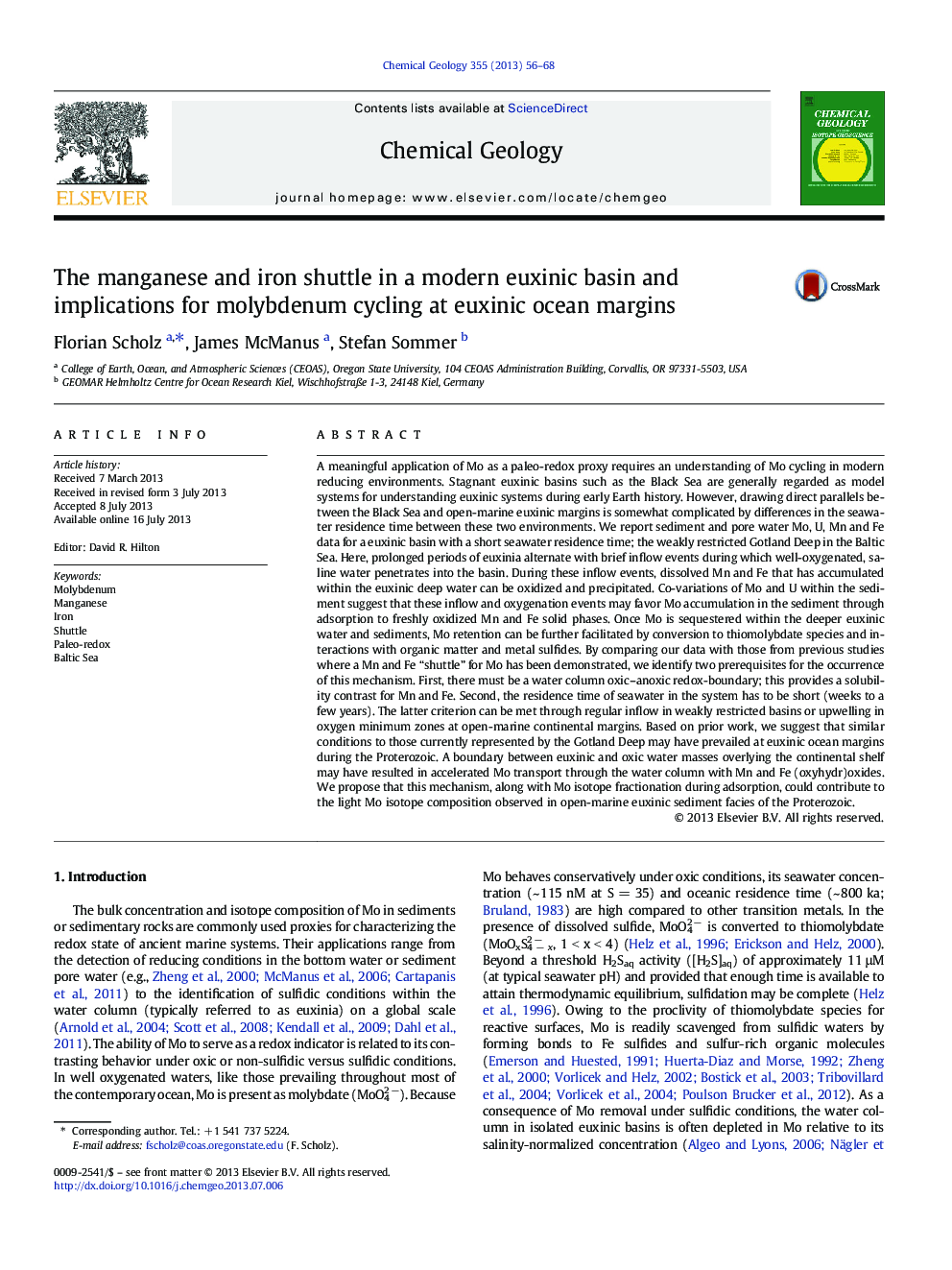| کد مقاله | کد نشریه | سال انتشار | مقاله انگلیسی | نسخه تمام متن |
|---|---|---|---|---|
| 6436790 | 1637614 | 2013 | 13 صفحه PDF | دانلود رایگان |
- There is coupled Mn, Fe and Mo delivery to euxinic sediments of the Gotland Deep.
- A Mn and Fe shuttle for Mo is a common feature in dynamic anoxic systems.
- This shuttle mechanism may contribute to the Mo isotope composition of Proterozoic black shales.
A meaningful application of Mo as a paleo-redox proxy requires an understanding of Mo cycling in modern reducing environments. Stagnant euxinic basins such as the Black Sea are generally regarded as model systems for understanding euxinic systems during early Earth history. However, drawing direct parallels between the Black Sea and open-marine euxinic margins is somewhat complicated by differences in the seawater residence time between these two environments. We report sediment and pore water Mo, U, Mn and Fe data for a euxinic basin with a short seawater residence time; the weakly restricted Gotland Deep in the Baltic Sea. Here, prolonged periods of euxinia alternate with brief inflow events during which well-oxygenated, saline water penetrates into the basin. During these inflow events, dissolved Mn and Fe that has accumulated within the euxinic deep water can be oxidized and precipitated. Co-variations of Mo and U within the sediment suggest that these inflow and oxygenation events may favor Mo accumulation in the sediment through adsorption to freshly oxidized Mn and Fe solid phases. Once Mo is sequestered within the deeper euxinic water and sediments, Mo retention can be further facilitated by conversion to thiomolybdate species and interactions with organic matter and metal sulfides. By comparing our data with those from previous studies where a Mn and Fe “shuttle” for Mo has been demonstrated, we identify two prerequisites for the occurrence of this mechanism. First, there must be a water column oxic-anoxic redox-boundary; this provides a solubility contrast for Mn and Fe. Second, the residence time of seawater in the system has to be short (weeks to a few years). The latter criterion can be met through regular inflow in weakly restricted basins or upwelling in oxygen minimum zones at open-marine continental margins. Based on prior work, we suggest that similar conditions to those currently represented by the Gotland Deep may have prevailed at euxinic ocean margins during the Proterozoic. A boundary between euxinic and oxic water masses overlying the continental shelf may have resulted in accelerated Mo transport through the water column with Mn and Fe (oxyhydr)oxides. We propose that this mechanism, along with Mo isotope fractionation during adsorption, could contribute to the light Mo isotope composition observed in open-marine euxinic sediment facies of the Proterozoic.
Journal: Chemical Geology - Volume 355, 26 September 2013, Pages 56-68
